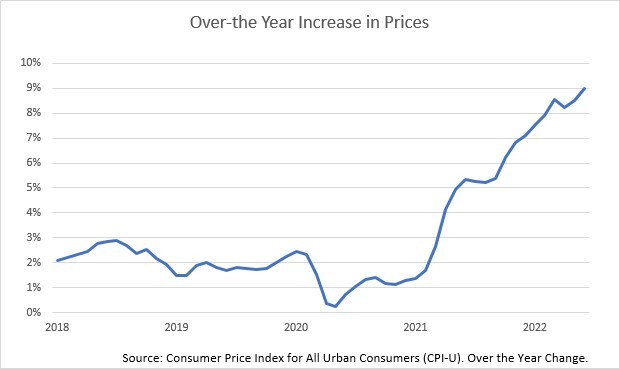DLI Newsletter | July 2022
- — July 27 2022
Message from the Commissioner:
Dear Reader,
Thank you for your continued engagement and feedback on this newsletter. Montana’s Department of Labor & Industry provides a broad array of services to Montana workers and employers, and we appreciate you taking the time to read these e-mails each month to learn more about them. As always, please feel free to e-mail DLICommunications@mt.gov if you have questions or topics you hope to see covered in future editions.
Sincerely,
Laurie Esau
Commissioner of Labor & Industry
Flooding Response Update
The Department continues to provide assistance to individuals impacted by the summer flooding in Park, Stillwater, Carbon, and Yellowstone Counties.
Individuals in Park, Stillwater, and Carbon Counties have until August 4th to apply for DUA. Those living in or working in Yellowstone County have until August 25, to apply for DUA.
If you are a resident of Park, Stillwater, Carbon, or Yellowstone Counties and have lost work due to recent flooding, you may be eligible for unemployment assistance. For more information visit DLI’s Disaster Unemployment Assistance page or call (406) 444-3454 to speak with a representative who can assist you.
500 Grow with Google Scholarships Available at No Cost
The Montana Department of Labor & Industry is partnering with Google to connect 500 job seekers statewide with no-cost access to Google Career Certificates training for well-paying, high-demand jobs in growing fields. The certificates equip people with job-ready skills in the high-growth fields of Data Analytics, Digital Marketing and E-Commerce, IT Support, Project Management, and UX Design. The online program can be completed in three to six months of part-time study—with no degree or experience required.
Students working towards a degree can earn a recommendation of up to 12 college credits for completing a Certificate—the equivalent of four college courses at the Bachelor’s degree level. After finishing the program, graduates are connected with an employer consortium of over 150 companies— including Deloitte, Ford, Verizon, Walmart, and Google—that considers them for relevant roles
For more information contact your local Job Service office.
Montana Economic Update

It's no secret: inflation is taking a bite out of every Montanan's paycheck. Inflation is running at 40-year highs, and from the gas pump to the grocery store checkout line, Montana workers are feeling it.
Rising gas prices, in particular, have placed a damper on summer travel and recreation in Montana. With long distances to drive, Montanans are more effected by rising gas prices than other states. In 2020, Montanans spent roughly 1.8% of our per capita income on gasoline and other similar fuels compared to 1.3% nationally (according to the Bureau of Economic Analysis). With gas prices more than doubling over the last two years, the average Montanan likely spends over $2,000 per year on gas now, taking a significant chunk out of budgets.
Will the rapidly rising prices lead us to a recession? Inflation itself does not cause recessions, but changes in monetary policy intended to address inflation can lead to recessions. Monetary policy makers are attempting to adjust interest rates in a way that creates a “soft landing” of slower growth in consumer demand while supply chains continue to increase capacity. Inflation can also cause recessions when consumers experience price shocks that far exceed their growth in income, causing consumers to spend less than in the past.
Therefore, there is a balancing act of wanting to slow down the growth in consumption to allow supply chains to catch up, but not so much that consumers reduce spending. Thus far, national results are mixed, with slumping GDP but continued employment and wage growth, suggesting the balancing act might be working.
Despite the painful inflation, for us here in Montana, employment and income metrics continue to be strong. Our labor force and total employment continue to grow, and today more Montanans are working than ever.
Apprenticeship on the Rise in Montana
Montana’s Registered Apprenticeship program provides a path for thousands of Montana workers to get paid while learning valuable skills on the job. An apprenticeship is a pathway to a secure, good-paying career in vital industries like health care, manufacturing, construction and IT.
In the first six months of 2022, Montana’s Registered Apprenticeship program has enjoyed tremendous growth. We’ve added 500+ new apprentices and more than 40 new employer sponsors already this year – far surpassing six month periods in prior years. Governor Greg Gianforte highlighted the growth in apprenticeships – and what it means for Montana’s workforce – last week. Read more here.
On Watch for Fraud in Professional Licensure
Among the many ways the Department of Labor & Industry impacts the lives of Montanans is in the licensure of professionals in a wide range of occupational fields. The Department processed more than 22,000 applications for licensure over the last 12 months alone, examining each application to ensure applicants have the necessary credentials to practice their trade safely in Montana. While that is a heavy lift alone the Department’s staff also was able to find the proverbial “needle in the haystack” when it detected 32 individual applications to our Board of Nursing that were found to be suspicious.
The Montana Board of Nursing recently considered these 32 applications, reviewing each and listening to information and evidence gathered by department staff. Following this review, the Board denied all 32 of the applications due to concerns for fraud and misrepresentation of qualifications.
The board’s denial of such a substantial number of applications represents the culmination of a significant amount of work by the Department’s Professional Licensing Bureau and Legal teams and reflects a vigilant effort by staff to identify concerns while simultaneously working diligently to license legitimate applicants as quickly as possible.
Montana has more than 25,000 actively licensed nurses (LPNs, RNs and APRNs) working in healthcare roles across the state of Montana. We’re pleased to have been able to prevent these individuals from fraudulently obtaining licenses and putting the public at risk.
Modernizing Unemployment Insurance (UI)
The Department’s Unemployment Insurance (UI) Division has used, for years, an outdated claims and benefits processing system developed in the early 2000’s. This antiquated system showed the signs of its age during the pandemic, where it struggled to cope with the unprecedented volume of unemployment claims despite the valiant efforts of our UI team.

But some good news: DLI has engaged a vendor and will be developing a new, modern UI benefits system that will speed the processing of claims and ultimately mean a smoother experience for Montana citizens in need of benefits. Through extensive negotiation, Montana was able to secure this system at a fraction of the cost other states are spending on comparable modern platforms – making the most of Montana taxpayers’ dollars.
The modernization project will formally launch in the coming weeks and we hope to deploy the new system starting late next year.
2022 Workers' Compensation System Stakeholder Meetings
More than 150 Workers’ Compensation claims professionals attended virtual stakeholder meetings offered by the Employment Relations Division’s work comp section. The meetings were primarily attended by certified claims examiners and workers’ compensation attorneys who rely on the work comp section for services regarding workers’ compensation claims processes. The three stakeholder’s meetings were held on June 30th, July 7th & July 14th.
Topics during this year’s meeting included: adoption of fiscal year 2023 workers’ compensation rates, claims examiner certification program requirements & the development of an online examiner certification platform, statutory medical benefits 5-year closure & petition for re-opening processes, electronic signature submission requirements, attorney retainer approval fees and costs reporting, medical fee schedule rates adoption, claim settlement approval requirements, Workers’ Compensation Court & Montana Supreme Court rulings summary.
In addition to the claims process topics covered, Jason Swant, Work Comp Section manager, provided a presentation on “Ethics and Best Practices for Workers’ Compensation Claims Handling”. The presentation outlined examiner obligations to provide claims service to workers’ compensation system customers. The content was based on the workers’ compensation act, department rule, Workers’ Compensation Court and Montana Supreme Court rulings, employer policy & industry standards and personal values/beliefs.
To maintain their mandatory certification, certified claims examiners are required to complete 24 education credits. Certified claims examiners who attended earned 3 continuing education credits, 2 legal & 1 ethics, towards their certification renewal.
For more information, visit the Department’s Employment Relations Division page here.
Contact
Jennifer Owen: Director, State Workforce Innovation Board
